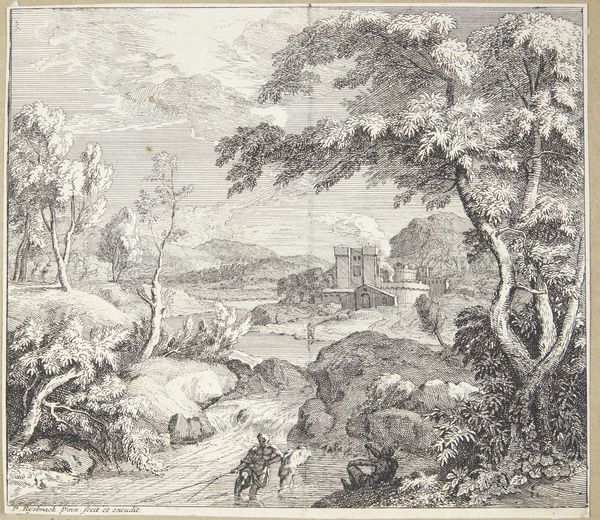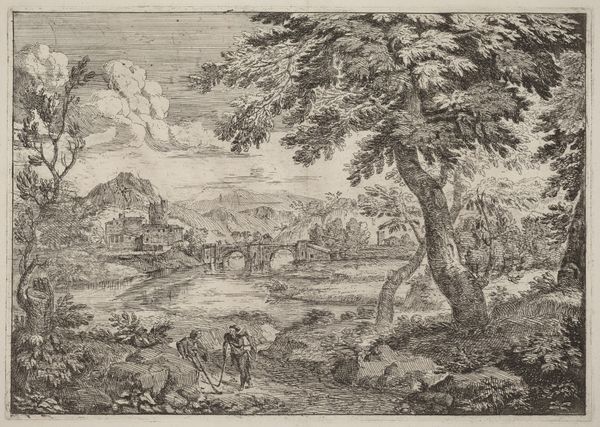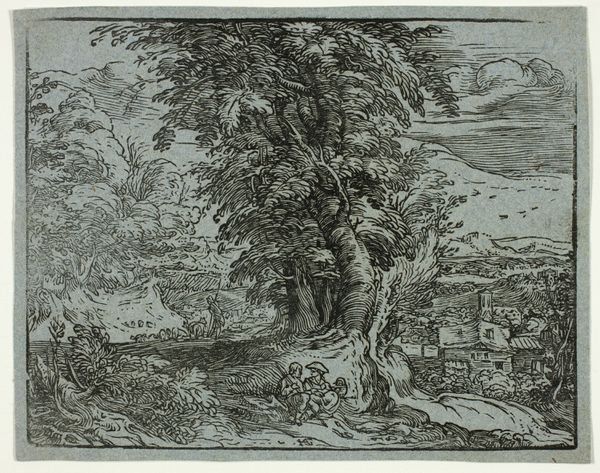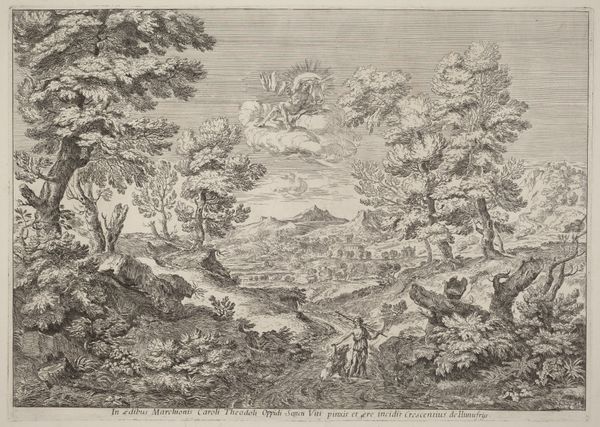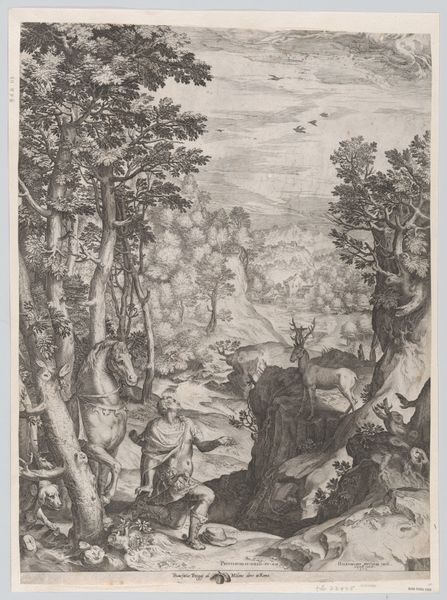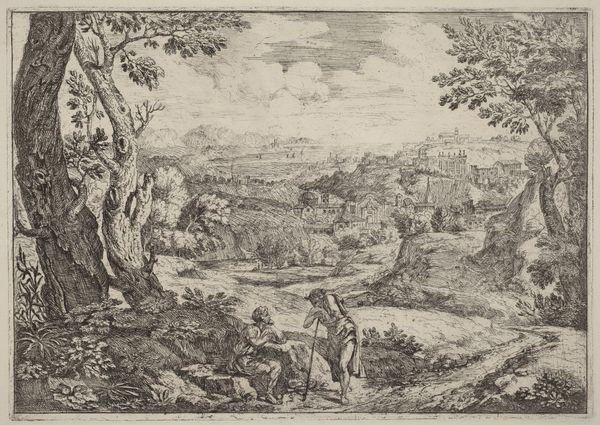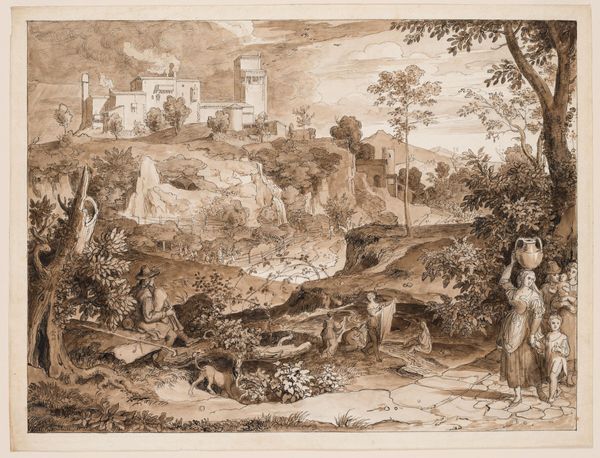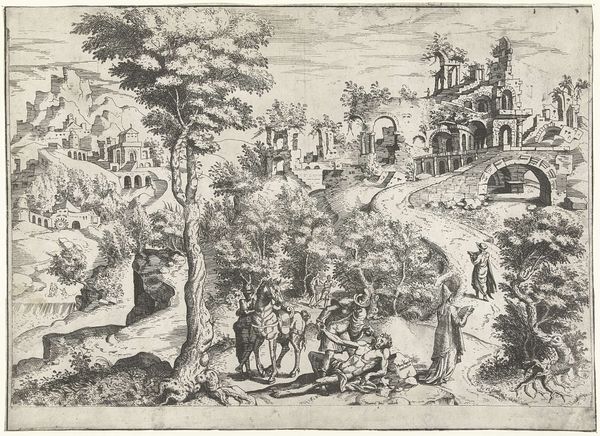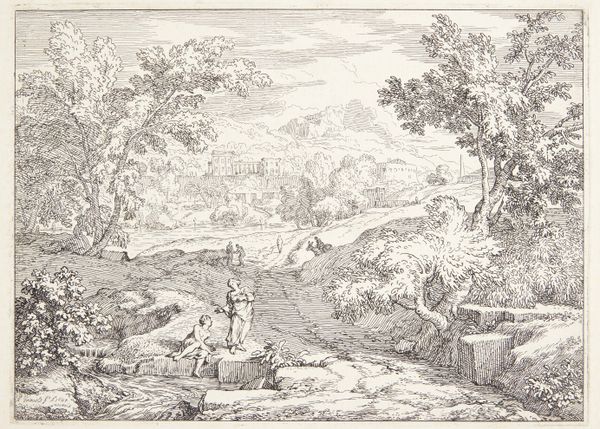
print, etching
#
baroque
# print
#
etching
#
landscape
#
genre-painting
Dimensions: 93 mm (height) x 120 mm (width) (None)
Curator: Allow me to introduce "Ecloga prima," a 1649 etching by Christian Rothgiesser currently residing at the SMK, the Statens Museum for Kunst. Editor: Immediately, I’m struck by the incredible density of detail achieved in this relatively small print. The landscape breathes with an energy that belies its modest scale. Curator: Absolutely, the way Rothgiesser works the etching plate is quite skillful. The range of tones he coaxes from simple lines creates remarkable depth. Note how he depicts daily life in genre painting. The physical act of producing so many near-identical images also speaks volumes about labor in 17th century printmaking workshops, a far cry from individualized, celebrated artistry. Editor: And yet, each impression carries with it the symbolic weight of pastoral tradition. These shepherds, seemingly at rest, invoke centuries of idealized rural life. Consider the figure playing the pipe – it is the shepherd as musician, a nod to art and leisure existing in harmony with nature, drawing on archetypes of innocence and simplicity, far from court life but closer to virtue. Curator: A useful lens for that is seeing those pastoral fantasies also served powerful social functions. For city-dwellers consuming prints like this, "simplicity" also reinforced notions of inherent social hierarchy, that some were destined for hard labor and the enjoyment of simple pleasures. It naturalizes this. Also notice the construction of the animal shelter. It implies certain systems were in place. Editor: A starkly different reading perhaps, but complementary nonetheless. The structure reminds me also of the enduring theme of shelter, a symbol of safety and belonging. Consider the enduring popularity of pastoral scenes: they connect with something fundamental within the human psyche - a yearning for a more connected life and escape from urbanity. These are timeless icons. Curator: Perhaps so. But those "timeless icons" have very specific historical material origins. It would be equally thought-provoking to consider how that shepherd's garment was woven, who sheared the sheep, and the system behind the trading of it to acquire a instrument to create leisure. That is my interest. Editor: I find the work prompts endless cultural interpretation across epochs, underscoring humanity's ongoing fascination with certain symbols. Curator: Indeed, examining the labor and commerce opens a completely different interpretation to understanding a seemingly simplistic scene. Editor: It's fascinating to realize both those interpretations are deeply rooted within a singular etching plate produced over three centuries ago.
Comments
No comments
Be the first to comment and join the conversation on the ultimate creative platform.
